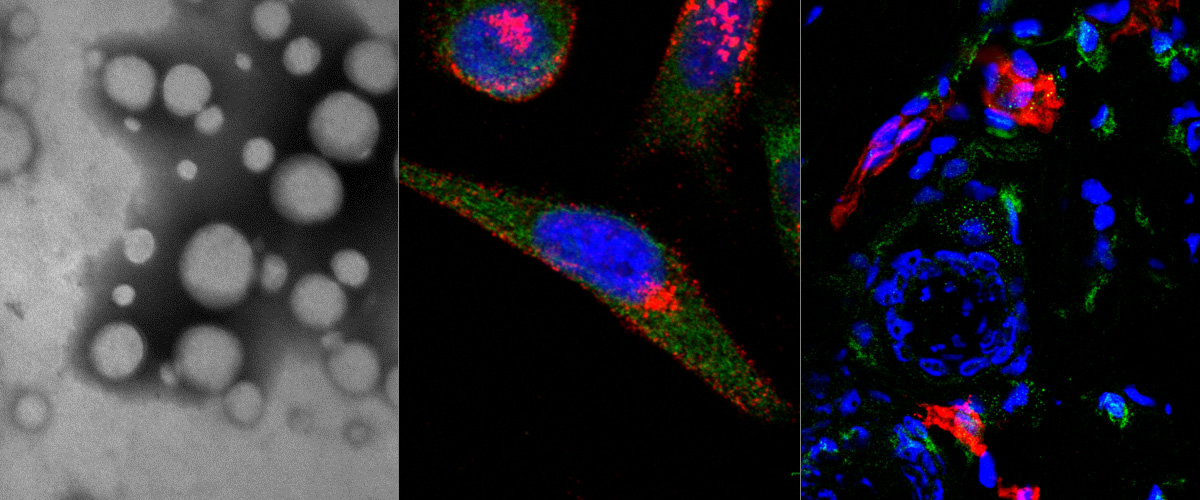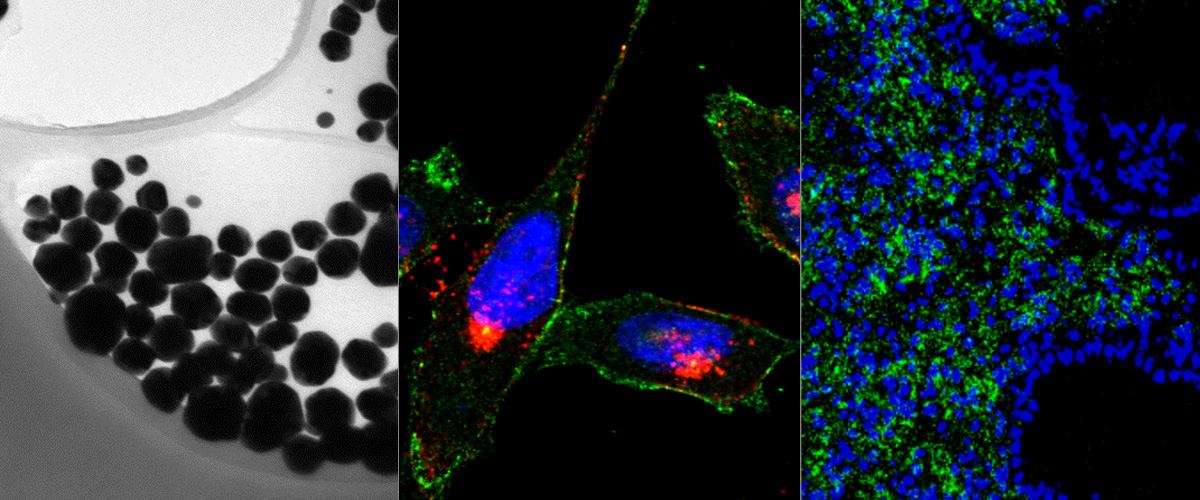Laboratory of Precision and Nanomedicine develops smart cancer therapeutics with increased potency and decreased side effects.
Our mission is to change the perception of cancer as being a largely incurable disease. We use in vivo peptide phage display screens to identify homing peptides that bind to specific targets in the vasculature. Corresponding synthetic peptides are explored for targeting drugs, biologicals, and nanoparticles into tumors to increase their therapeutic index. We focus on development of novel diagnostic tests and therapeutics for the early detection and precision treatment of solid tumors (glioblastoma, and breast, prostate ovarian, prostate, and colorectal carcinoma). Our lab is also at the forefront of development of next generation peptidic shuttles capable of efficient and high capacity payload delivery across the blood brain barrier.
News
-
 Looking forward to exciting 2024
Looking forward to exciting 2024
Written on Saturday, 10 February 2024 11:07
Our lab is buzzing with activity, fueled by new grants and promising projects set to unfold in 2024. We eagerly await the publication of groundbreaking… -
 Success: Transcan-3 Grant Awarded to "ReachGLIO" Project
Success: Transcan-3 Grant Awarded to "ReachGLIO" Project
Written on Friday, 22 December 2023 00:13
We are thrilled to share the exciting news of our latest achievement in securing European funding. The consortium led by Prof. Pilar Sanchez Gomez from… -
 Advancing Innovation: IP Protection Milestones in 2023
Advancing Innovation: IP Protection Milestones in 2023
Written on Friday, 22 December 2023 00:10
In 2023, our laboratory has been actively engaged in securing intellectual property (IP) for the innovative inventions developed within our research initiatives. We are pleased…



Recent publications
-
Macrophage Hitchhiking Nanoparticles for the Treatment of Myocardial Infarction: An In Vitro and In Vivo Study
Written on Friday, 22 December 2023 00:33
Giulia Torrieri, Imran Iqbal, Flavia Fontana, Virpi Talman, Heidi Liljenbäck, Andriana Putri, Wail Nammas, Johan Rajander, Xiang Guo‐Li, Philip S Low, Tambet Teesalu, Anne Roivainen,… -
Enhancing Apoptosome Assembly via Mito‐Biomimetic Lipid Nanocarrier for Cancer Therapy
Written on Friday, 22 December 2023 00:31
Huijie Han, Jie Chen, Jiachen Li, Alexandra Correia, Raquel Bártolo, Mohammad‐Ali Shahbazi, Tambet Teesalu, Shiqi Wang, Wenguo Cui, Hélder A Santos Advanced Functional Materials 33…
Images
-
October
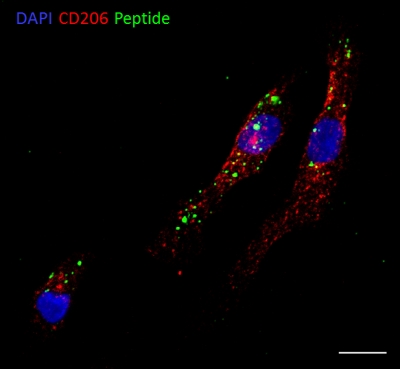 Peptide targeted polymersomes bind to M2 human macrophages
Polymersomes targeted with an M2 macrophage binding peptide (green) identified in our lab using phage display bind to and are taken up by M2s (red) originated from human primary monocytes.…
Peptide targeted polymersomes bind to M2 human macrophages
Polymersomes targeted with an M2 macrophage binding peptide (green) identified in our lab using phage display bind to and are taken up by M2s (red) originated from human primary monocytes.… -
September
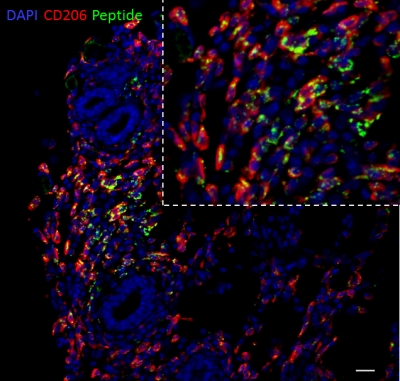 Polymersomes targeted with an M2 macrophage binding peptide in a mouse model of triple negative breast cancer
Polymersomes targeted with an M2 macrophage binding peptide (green) identified in our lab using phage display home to M2 TAMs (red) after intravenous administration in a mouse model of triple…
Polymersomes targeted with an M2 macrophage binding peptide in a mouse model of triple negative breast cancer
Polymersomes targeted with an M2 macrophage binding peptide (green) identified in our lab using phage display home to M2 TAMs (red) after intravenous administration in a mouse model of triple… -
January
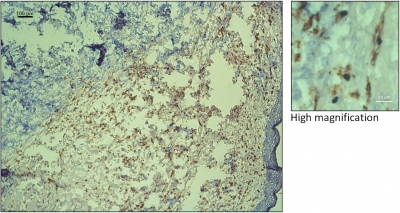 High infiltration of CD206+ cells in human breast tumors
Immunohistochemical staining of human CD206 (brown) with nuclear counterstain (Hematoxilin, in dark blue). Authors: Anni Lepland and Pablo Scodeller.
High infiltration of CD206+ cells in human breast tumors
Immunohistochemical staining of human CD206 (brown) with nuclear counterstain (Hematoxilin, in dark blue). Authors: Anni Lepland and Pablo Scodeller.


